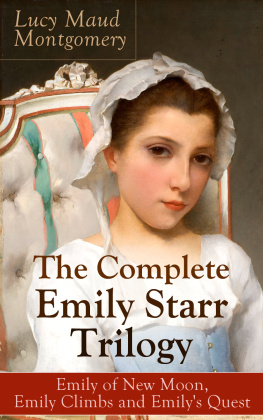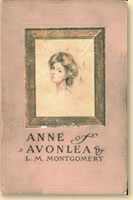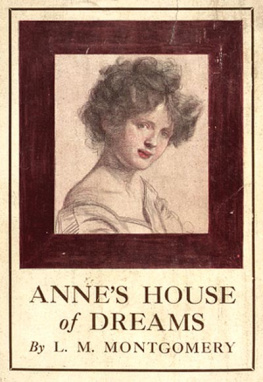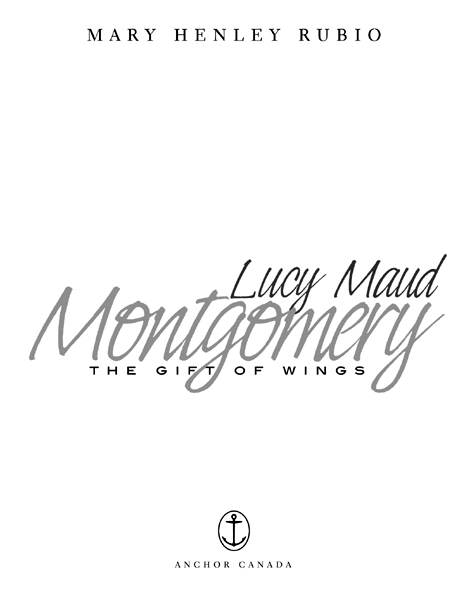Praise for
Lucy Maud Montgomery
NATIONAL BESTSELLER
Shortlisted for the B.C. National Award for Canadian Non-Fiction
Lucy Maud Montgomery: The Gift of Wings soars with the energy of its title, but delves even deeper into Montgomerys dark side. Rubio deftly paints the portrait of a multitasking modern woman with an amazing work ethic.
The Globe and Mail
Truly gifted biographers have the knack of making a reader feel as if he or she is walking around inside the subjects soul. Mary Henley Rubio is one of those, as she so aptly demonstrates with her absolutely gripping biography of Lucy Maud Montgomery. Nothing short of brilliant, an un-put-downable read, and a wonderful examination of this troubled womans tragic life.
Ottawa Citizen
A poignant story about a real family pure Canadian Gothic: a story of sexual repression, class conflict and family secrets.
The Gazette (Montreal)
Richly readable Scholarly, meticulously researched and laced with warmth and insight, Rubios book may offer the definitive slant on the life and work of the Prince Edward Island writer. [Rubio] offers a well-nuanced, captivating and challenging account of Montgomerys remarkable life. Well measured, endlessly interesting and superbly written, Rubios account of Maud Montgomerys tragic, accomplished life is impossible to set aside.
The London Free Press
BY THE SAME AUTHOR
Co-editor,
The Selected Journals of L. M. Montgomery
(five volumes, 19852004)
Co-author, Writing a Life: L. M. Montgomery
Harvesting Thistles: The Textual Garden of L. M. Montgomery
Co-editor, Anne of Green Gables, Norton Critical Edition
Copyright 2008 Mary Henley Rubio
Anchor Canada edition published 2010
All rights reserved. The use of any part of this publication, reproduced, transmitted in any form or by any means electronic, mechanical, photocopying, recording or otherwise, or stored in a retrieval system without the prior written consent of the publisheror, in the case of photocopying or other reprographic copying, a license from the Canadian Copyright Licensing Agencyis an infringement of the copyright law.
Anchor Canada is a registered trademark.
Library and Archives Canada Cataloguing in Publication has been applied for.
eISBN: 978-0-385-67481-2
Anne of Green Gables is a trademark of the Anne of Green Gables Licensing Authority Inc.
Quotations from the unpublished journals of the L.M. Montgomery Collection, Archival and Special Collections, University of Guelph Library.
Quotations from The Selected Journals of L.M. Montgomery, Vols. I to V copyright 1985, 1987, 1983, 1998, and 2004, University of Guelph, edited by Mary Rubio and Elizabeth Waterston, and published by Oxford University Press Canada, are reproduced with the permission of Mary Rubio, Elizabeth Waterston and the University of Guelph, courtesy of the L.M. Montgomery Collection, Archival and Special Collections, University of Guelph Library.
Published in Canada by Anchor Canada, a division of Random House of Canada Limited
Visit Random House of Canada Limiteds website: www.randomhouse.ca
v3.1
This book is dedicated to
Elizabeth Hillman Waterston,
an inspirational teacher to decades of students
and my colleague, collaborator, and valued friend for many years,
and to
my two beloved and supportive daughters,
Tracy and Jennie,
who have assisted my research and writing
in so many different ways.

INTRODUCTION
In November 1907, Lucy Maud Montgomery wrote to a friend that biography is a screaming farce. She added that the best biographies give only two-dimensional portraits, but every person has a half dozen different sides. In 2008, one hundred years after the publication of Anne of Green Gables, we know much more about the many sides of Maud, as she liked to be called. And in fact many now feel that Mauds greatest literary creation was her own tortured self-portrait, now published in her private journals more than fifty years after her death. But the truth may be even more complicated than that.
Mauds life feels at times like a smoke-and-mirrors game. By 1920, when her name was famous all over the English-speaking world, Maud began preparing material for those who would later interpret her life. She compiled scrapbooks, account books, review-clipping books, and a multitude of other memorabilia. Although she was (in her sons words) a packrat by nature, this material was also intended as a cache of information for those who would later become her biographers. She carefully recopied her journals, starting in 1919, making an edited, permanent copy. She saw her journals as her greatest gift to future biographers: they presented her life as she wanted it remembered.
When Elizabeth Waterston and I began editing the L. M. Montgomery journals in the 1980s, we took them at face value. Later we came to question elements in these fascinating life-documents. They did not hold the truth, we felt, so much as a truth. These journals, frank in so many ways, and so rich as social history, began to seem to us a cache of concealments, displacements, contradictions, and omissions. Initially, they seemed such a boon, but eventually they became another layer to excavate through. This biography will track some of my own processes, as well as my conclusions. In the nearly three decades that she has been the object of my part-time research I have never grown bored with Maud. She is truly a biographers dream subject: you never feel that you have found the master key that fully unlocks all the rooms in her house.
In 1908, Lucy Maud Montgomery burst onto the literary scene with her first novel, Anne of Green Gables. At age thirty-three, she had already published scores of short stories and poems, but this best-selling novel achieved instant acclaim, with seven impressions printed in its first year alone. It churned up so much attention that her home province, Prince Edward Island, soon had a flood of visitors, all wanting to see the landscapes she painted so vividly. Her publisher demanded sequels, and she obliged, eventually making her beloved Island a site for tourists from all over the world. Her books appeared to be simple little tales (to echo her own modest phrasing in a journal entry dated October 15, 1908), but that was misleading: the last quarter century of scholarly research has shown that her writing has been, in fact, a very powerful agent of social change.
Anne of Green Gables was not written as a novel for children. It was aimed at a general audience of adults and children, men and women, sophisticates and simple readers, as were many of her other books. It appealed to famous statesmen as much as to ordinary people. In 1908, the celebrated author Mark Twain wrote Maud to praise Anne as the dearest and most moving and delightful child since the immortal Alice. In 1910, Earl Grey, one of Canadas most beloved Governors General and an esteemed writer himself, travelled to Prince Edward Island just to meet her. In 1923, she was the first Canadian woman to be elected as a member of the British Royal Society of Arts.


